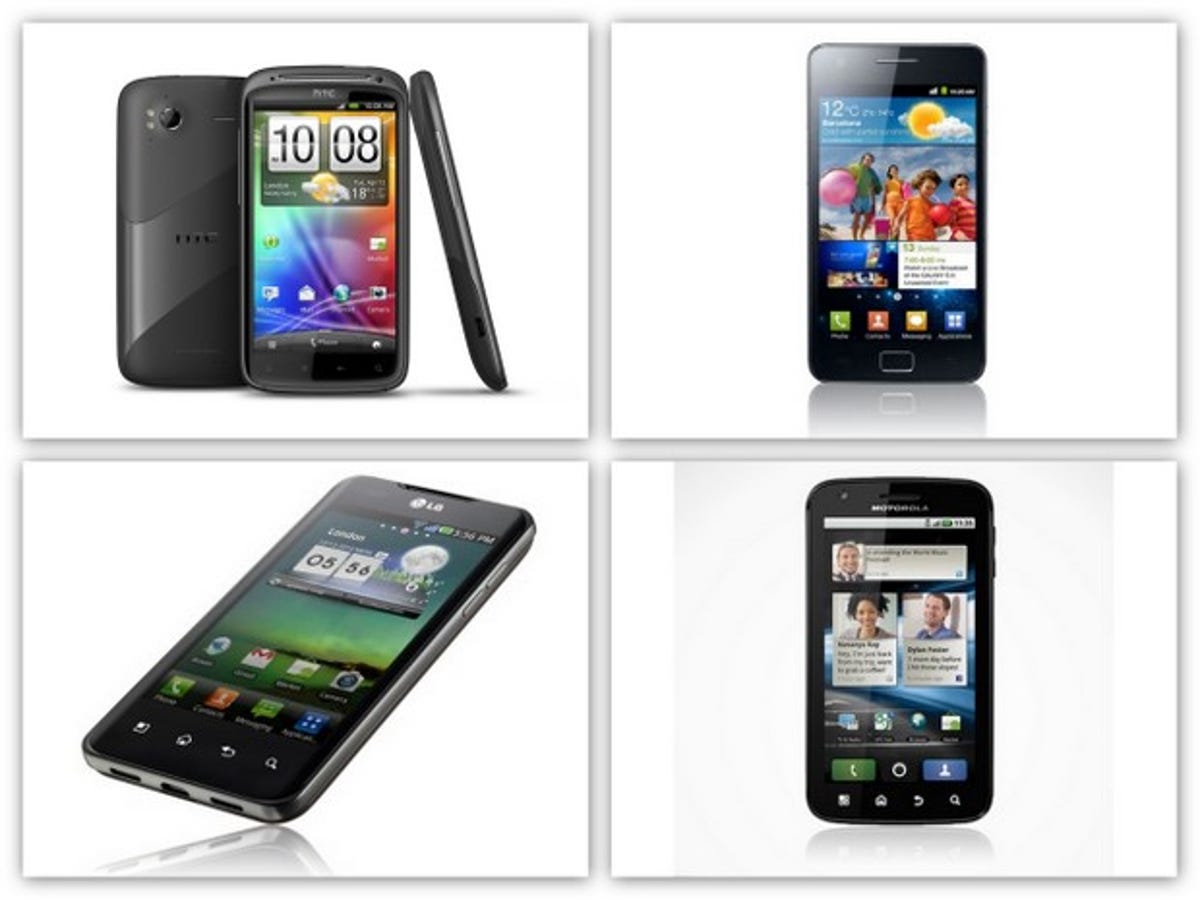
It’s time for a dual-core duel. All of these phones have dual-core processors, and all run Google’s Android operating system. We’ve had our mitts on these multi-core monsters, so how are they shaping up?
The Nvidia Tegra 2 dual-core CPU, which is in the LG Optimus 2X and Motorola Atrix, is a graphics master, so expect whizzy user interfaces and mind-melting games on these phones. There’s even an Android app from Nvidia dedicated to serving up games that have been specifically designed to take advantage of its two-headed chip.
We’ve yet to benchmark the dual-core Qualcomm Snapdragon chip that’s in the HTC Sensation, or the Samsung CPU that powers the Samsung Galaxy S 2, so we’ll have to wait and see how they stack up to the Tegra 2.
But before you start enjoying your two tonnes of fun, you have to choose which phone is right for you. So, on to the contenders.
HTC Sensation
The HTC Sensation looks much like HTC’s previous phones, especially the HTC Desire S. Although that dulls our excitement, there’s more than enough promise under the hood to have us feeling the Sensation again.
HTC’s Android skin, Sense, is one of the few manufacturer interfaces we can recommend, because it adds useful features and looks good doing it. The user interface is fancier than ever on the Sensation, taking advantage of the dual-core processor, running at 1.2GHz, to power 3D transitions and animations everywhere. It looks impressive, but we hope it doesn’t sap the phone’s strength and leave nothing for the apps and games that really matter.
The Sensation also manages to pack a 4.3-inch screen — the same size as the huge HTC Desire HD — into a rounded case that doesn’t feel as heavy or chunky.
Samsung Galaxy S 2
We have such a crush on the Samsung Galaxy S 2 we’ve put up posters of it in our locker. It’s worthy of our puppy love because in person, the Galaxy S 2 is fabulously good looking. Its huge 4.3-inch touchscreen is bright and sharp, but the phone remains surprisingly light. It may be too big for small hands, though, and it’s also likely to stretch your pockets with its price.
When it was announced, the Galaxy S 2’s processor was going to clock in at 1GHz. Since then, Samsung has confirmed that the phone will run at 1.2GHz, just like the Sensation.
Whether our crush turns into true love depends on the Galaxy S 2’s software. The original Galaxy S only achieved true greatness after a couple of software updates. Samsung’s syncing software, Kies 2.0, also has an awful lot of begging to do before we forgive its unstable first version.
LG Optimus 2X
LG’s dual-core contender impressed us with its 1GHz dual-core speed, aceing our CPU and 3D benchmarks compared to the top single-core competition.
We weren’t so chuffed, however, with the pre-loaded apps that led us to accuse it of being the first smart phone with bloatware. The Optimus 2X also drew our ire for having some software bugs, including flaky Wi-Fi. The phone has since received an update, so fingers crossed some of its failings have been sorted.
Motorola Atrix
The Motorola Atrix adds some innovative accessories to take advantage of its dual-core power. A wafer-thin laptop dock adds a big screen, and launches a different operating system on the phone, which includes the Firefox Web browser. There’s also a dock for connecting the phone to your telly over HDMI, with yet another user interface that’s optimised for using a remote control.
It’s tricky to wrap your head around, but not to worry — even if you don’t invest in its many accessories, the Atrix still has plenty to recommend it. Like the Sensation, it has a 540×960-pixel screen — more than the 480×800 pixels of most smart-phone displays. In person, the phone itself is fairly bland-looking, but the screen looks stunningly sharp.
We’re not big fans of Motorola’s Motoblur skin, though. We appreciate its features under the hood, which include being able to track your phone over the Web when it gets lost. But its boldly coloured icons and chunky widgets rub our design sense the wrong way.
Update: We wrote that all four phones used Nvidia Tegra 2 processors, but the HTC Sensation uses a Qualcomm Snapdragon chip, while the Samsung Galaxy S 2 has a Samsung Exynos brain. All three types of processor are dual-core.



